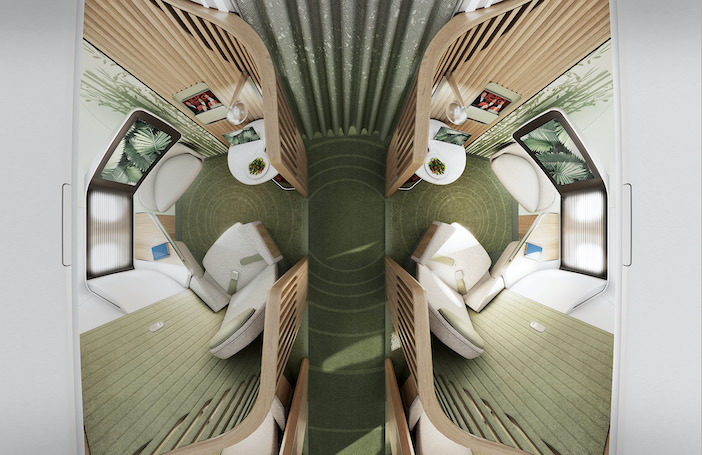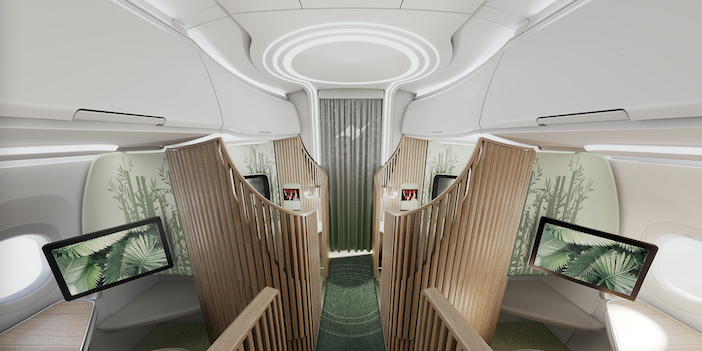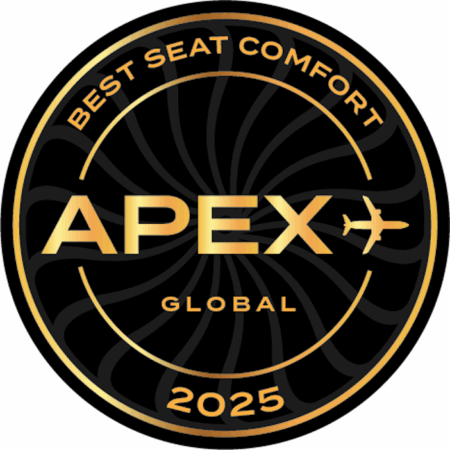The shortlist for the Crystal Cabin Awards 2022 has been announced, and one entry seems to be gaining the most interest in the mainstream media: Elevate, a single-aisle aircraft cabin that uses ‘floating furniture’ as a new approach to the business class passenger experience. With such interest, Elevate warrants a closer look beyond the eye-catching visuals.
Single-aisle aircraft with a long range, such as the Airbus A321LR, are increasingly being used for long-haul flights, enabling airlines to fly full planes on routes that would not fill a larger twin-aisle widebody aircraft such as a Boeing 787 Dreamliner. However, passengers are used to flying on widebodies on such routes, and may feel the premium experience in a narrowbody cabin does not meet or exceed the standard of a widebody – mainly because of the reduced cabin footprint, seat pitch and constrained cabin architecture of the smaller cabins. And if an airline flies a mixture of single- and twin-aisle aircraft in its fleet, its customers should have an equally enjoyable experience, regardless of which aircraft has been deployed on their route.
In response, Teague, a Seattle-based design and innovation company, has designed Elevate, with the goal of creating a cabin that offers business class passengers in narrowbodies more personal space, privacy, and comfort in a home-like interior – without compromising seat count.
The Elevate suite environment wraps around the whole passenger living space, creating a zone that feels both private and open, with a residential atmosphere. The layout itself – a reverse herringbone – is familiar to passengers and regulatory bodies and Teague says it achieves market-competitive cabin density and seat pitch. Customised entrance lighting and overhead stowage bins deliver a “wow” factor for all passengers entering the cabin. Even passengers heading towards the economy section will feel part of the airline brand’s luxurious and stylish experience.
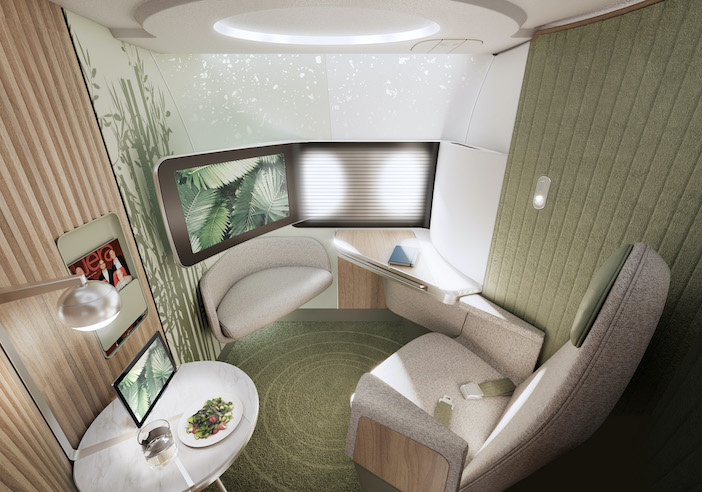
Creating a pretty design is relatively simple for a talented designer, but the tricky part is making it work with the constraints of the usual furniture attachment points in the seat tracks. Teague overcame the issue by moving the attachment points to the sidewalls – a world first in cabin design – which enables the creation of a lighter and more efficient suite environment. Mounting fixtures in the sidewall eliminates the restrictive structures around the IFE monitor, side furniture, and ottoman, enabling the Elevate concept to offer a larger floorspace, which in turn enables an increased bed size, living space and stowage capacity for every passenger. The design is innovative and attractive, and brings the experience closer to that of the larger jets.
With sustainability being a key theme today, the suite structures of Elevate are also lightweight, helping the aircraft’s fuel efficiency. The solid-state design also reduces the need for moving parts (such as suite doors) and the associated engineering cost and complexity.
Of course, with cabin engineering nothing is simple, so the rethought furniture attachment points represented a challenge. Teague worked with Nordam, an aerospace supplier, which offers the technology to make the concept a realistic proposition: the patented Nbrace composite seat attachment.
As Nordam’s CEO, Meredith Siegfried Madden, explains, “This is a next-generation innovation that enables more creative freedom for the aircraft interior design community. By revolutionising how seats and other monuments attach to an aircraft, Nbrace recruits previously wasted space, transforming it into new aesthetic possibilities and dramatically improved passenger comfort, space and privacy.”
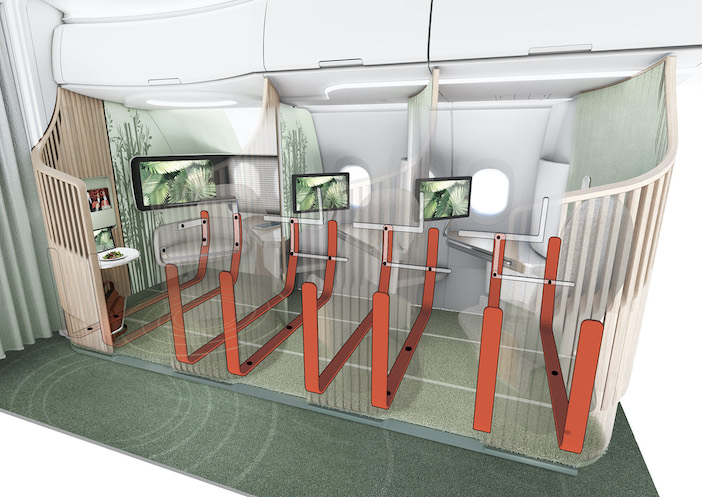
Elevate will certainly be a talking point during the judging process for the Crystal Cabin Awards, and it will be showcased at Aircraft Interiors Expo 2022 in Hamburg this June.
Anthony Harcup, senior director of airline experience at Teague says of the concept, “At a time when passenger wellbeing and sustainability are industry priorities, Elevate heralds-in a new generation of beautiful, simplified cabin products that will enable airlines to deliver exceptional experiences for their passengers with the economic efficiency that these smaller aircraft were designed to deliver.”
